S
taying at the renovated guesthouse was fun. I was given the tour by my host, but I did my own peeking when I could. Why? To study the details, you know, the real story. One that satisfies my curiosity. And to take notes, of course.
Again, the experience reminded me that we are more alike than different in this world of humans. Everyone of us wants to improve our lives and we do it the best way we know how. Resources, whether it’s money or time, may be scarce but we do it anyway… well, most of us.
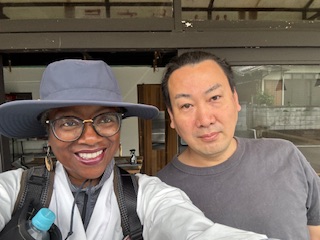
Now it is time to move on to the next… what? The next temple or new accommodation? The next few temples are relatively close together but a mountain or forest may get in the way. Perhaps I could find the place where I will be staying, then head out to a temple or two or three or four.
Well, I won’t stand here and debate with myself.
Walk with me.
Out of order
I am mindful as I can be when walking on the path. My mind is never empty. How far is the next temple? Where can I get food? Where is my accommodation… tonight? Should I rest at that henro hut ahead for ten minutes?

The answers to those questions come to me in the same manner. The farmhouse where I am staying is near temple 75, Zentsu- ji. In fact, if I go to the farmhouse first, I would pass the temple. So, I decided to visit it, then go to the farmhouse.
75 Zentsu-ji
Temple of the Right Path
Zentsu-ji is the head temple of the Zentsuji School of the Shingon sect. It is the first and therefore oldest Shingon temple on the path.
Zentsu-ji, To-ji in Kyoto and Koyasan in Wakayama are the three great sacred places of Shingon Buddhism in Japan.
It was built by Kukai to honor his birth place, childhood home and ancestors. The name Zentsuji is an interpretation of the name of Kukai’s father, Yoshimichi.
Buildings on Zentsu-ji
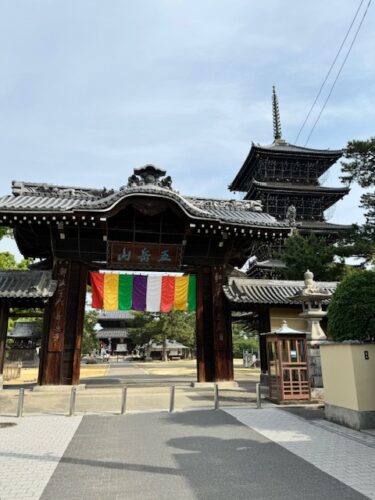
The huge grounds at Zentsu-ji are divided into the original site called the Tōin, or eastern temple, and the birthplace of Kūkai, called the Saiin, or western temple.
The long paved walkway to the main hall emphasizes the vast size of the precinct.
The Mieido was built on the site of the family residence where Kukai was born.

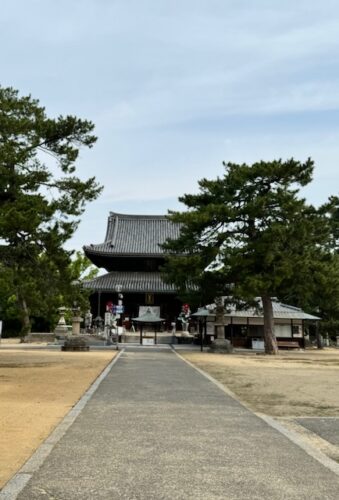
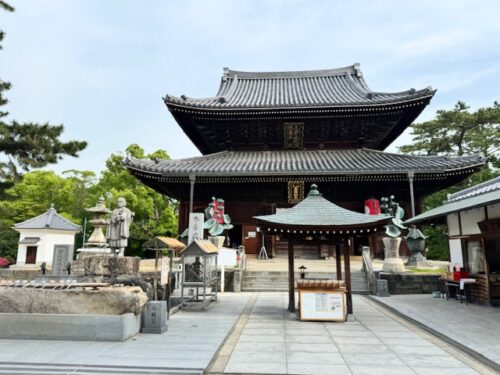
The hondo or main hall at Zentsu-ji.

The five storied wood pagoda stands out on the precinct grounds. It has been rebuilt several times due to the ravages of weather and fire.
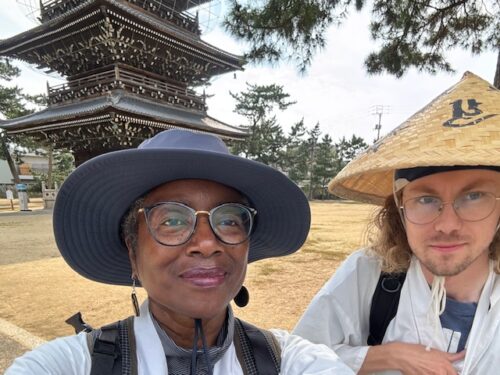
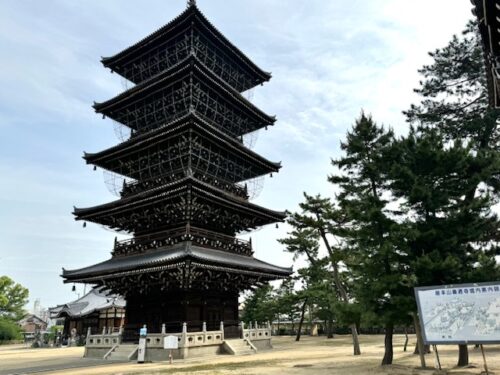
Another ohenro friend stopped to say hello.

This sacred twelve-hundred year-old camphor tree planted by Kukai is braced to the hilt! A plaque near the tree calls for world peace.
Another older camphor tree was planted when Kukai was born.
A pond runs through it


A pond runs through the temple grounds. It is a pretty scene that deepens the connection to Kukai.
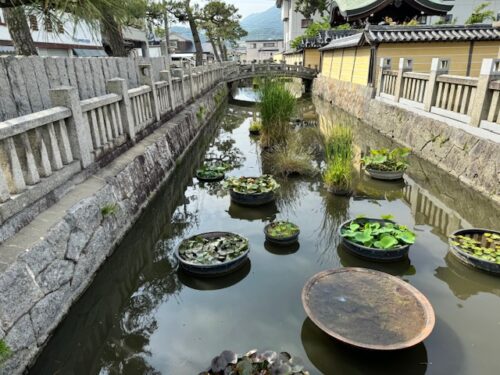
The view from Hatsuka bridge is the first I’ve seen on Shikoku pilgrimage.
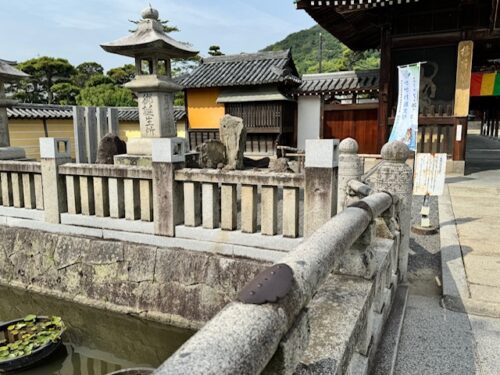
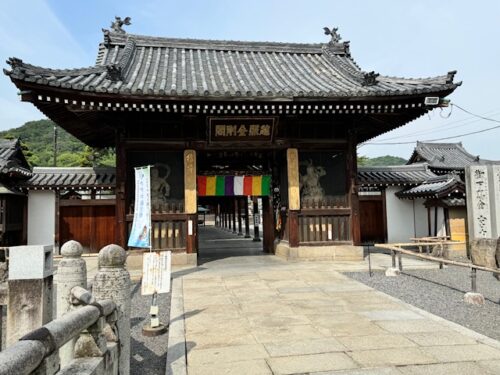
The Niomon gate. It houses the Nio guardians who look over visitors crossing the pond to get to the east or west side of the temple precinct.
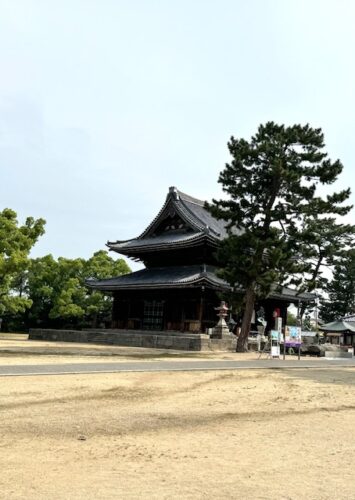
The temple grounds appear rustic but are serene.
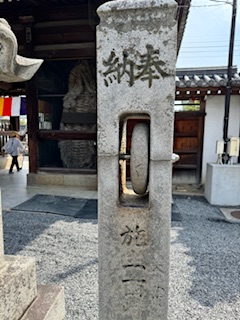
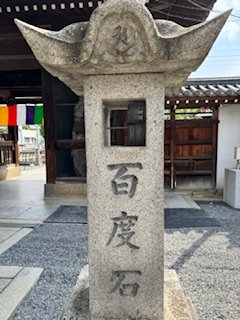
Visitors turn the prayer wheel and make a prayer.
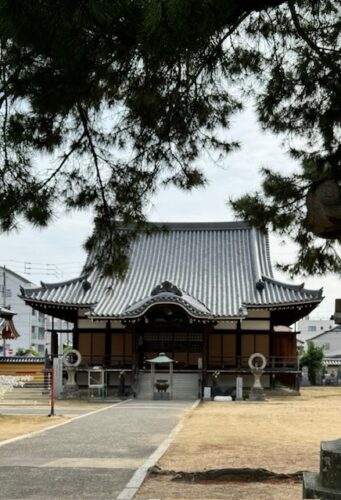
The Daishido.
Buddhas followers

The main gate looms over statues of Kongōrikishi standing on both sides of the outer gate,

Similar to Unpen-ji (temple 66) the statues are throughout the precinct.
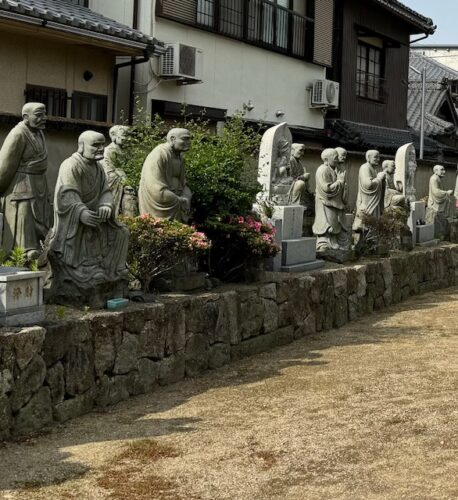
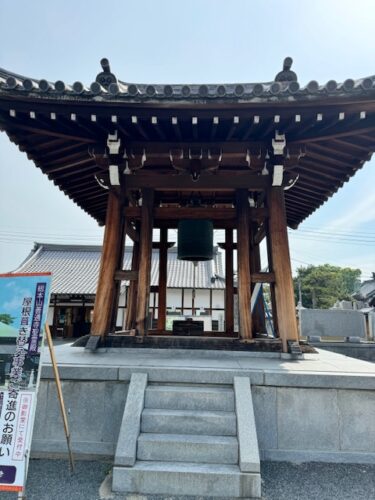
The belfry.
More buildings at Zentsu-ji

Corridor at the Mieido.
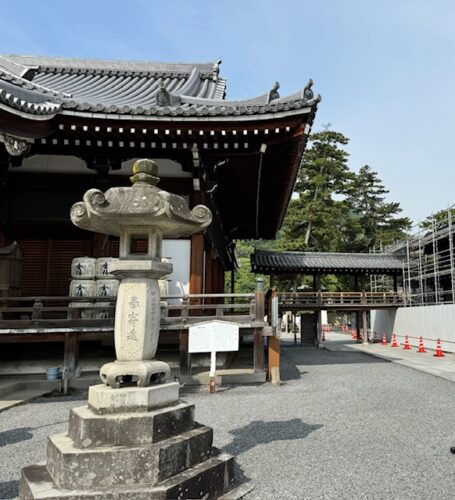
A tunnel beneath the Mieido enables visitors to walk in darkness and silent meditation close to the site of Kukai’s birth.

The mountains in the background and bell tower in the front bring up sentimental feelings.

The Okuden (reception hall).
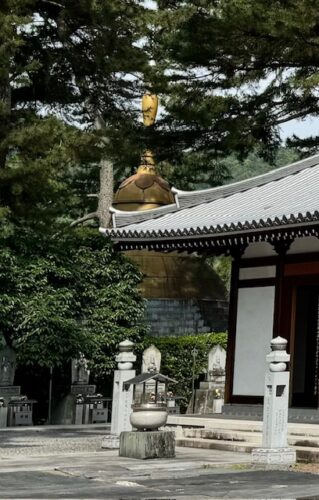
The gold dome of the Pagoda Memorial Tower peeks through the trees.
Documents, treasures, and statues relating to Kukai are stored at the temple halls. Access to the visiting public is granted at different times of the year or by special appointment.

Goma Hall.
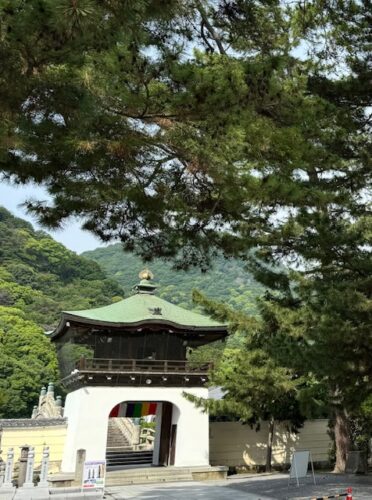
The white gate at the back is the Shōgakumon gate, and beyond it is the Saisei Bridge.
Zentsu-ji, temple 75, has a fascinating story that always begins with Kukai. He left Japan for China to study Buddhism. Upon his return, he sought to establish it as a unifying religion of peace. It took many years. Not long after accomplishing many of his goals, he died.
The moment a man sets his mind
on enlightenment
he has attained
enlightenment.
This is such a large precinct that requires a lot of time to explore. However, I need to move on from Zentsu-ji temple.

See you next time… somewhere on the Mairi path.
Baadaye and Mata Ne (またね)
Shirley J ♥️
This and several posts this summer will chronicle my pilgrimage in Japan where I am walking the 1200 kilometer-long Shikoku 88 temple pilgrimage. Read my announcement here.

T75
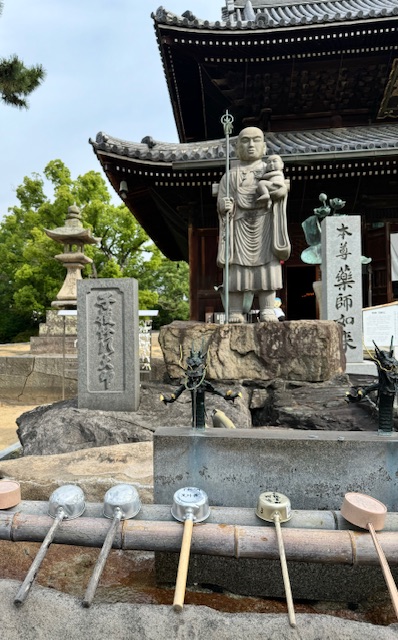
2 thoughts on “🌸 Noire Henro-san: His Father’s Name”
Sorry you got attacked by pirates. Glad you’re still walking and posting.
Yea!!! And you got it from the source. That is what is what it is all about! Not last woman standing but one of many standing. Thanks for reading, commenting, and subscribing.
Comments are closed.